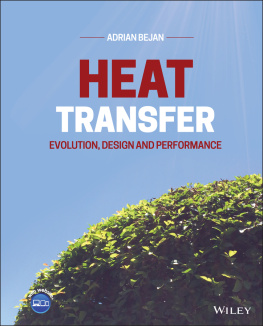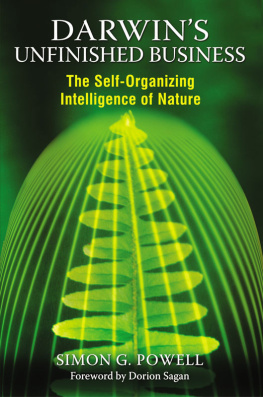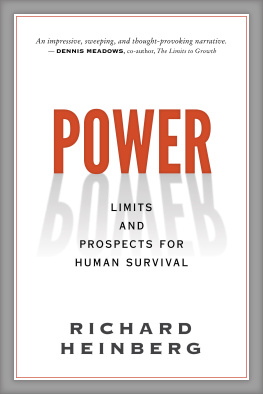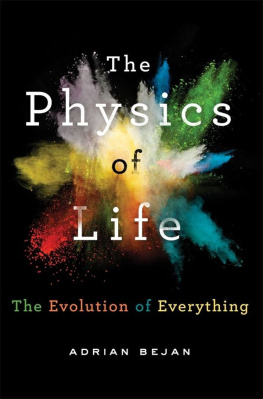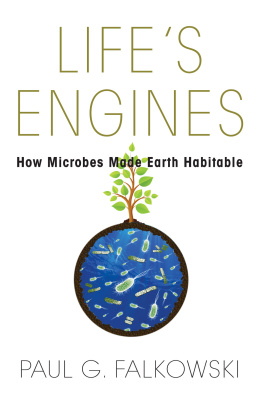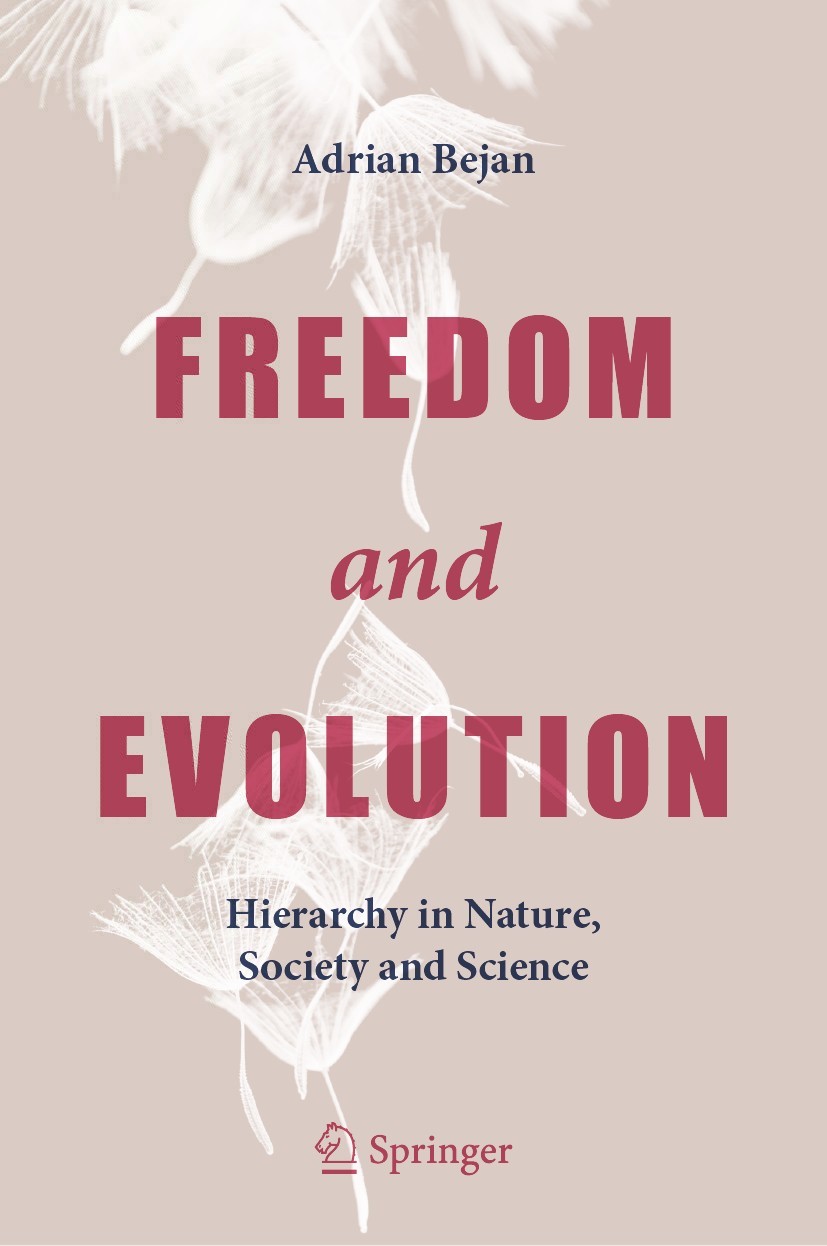Adrian Bejan
Duke University, Durham, NC, USA
ISBN 978-3-030-34008-7 e-ISBN 978-3-030-34009-4
https://doi.org/10.1007/978-3-030-34009-4
Springer Nature Switzerland AG 2020
This work is subject to copyright. All rights are reserved by the Publisher, whether the whole or part of the material is concerned, specifically the rights of translation, reprinting, reuse of illustrations, recitation, broadcasting, reproduction on microfilms or in any other physical way, and transmission or information storage and retrieval, electronic adaptation, computer software, or by similar or dissimilar methodology now known or hereafter developed.
The use of general descriptive names, registered names, trademarks, service marks, etc. in this publication does not imply, even in the absence of a specific statement, that such names are exempt from the relevant protective laws and regulations and therefore free for general use.
The publisher, the authors and the editors are safe to assume that the advice and information in this book are believed to be true and accurate at the date of publication. Neither the publisher nor the authors or the editors give a warranty, expressed or implied, with respect to the material contained herein or for any errors or omissions that may have been made. The publisher remains neutral with regard to jurisdictional claims in published maps and institutional affiliations.
This Springer imprint is published by the registered company Springer Nature Switzerland AG
The registered company address is: Gewerbestrasse 11, 6330 Cham, Switzerland
Preface
Evolution is the defining phenomenon of nature. Everywhere we look what we see is evolving becaue it is free to move and morph. Without freedom to change, there is nothing, no design, no evolution, and therefore no future.
Freedom is everywhere because evolution (design change) is everywhere in the inanimate, animate and human realms. Yet, unlike evolution, freedom is not a scientific subject. This struck me as strange. It is as if scientists are afraid to speak the word freedom even though every day they rely on the reality (the physics) behind that word. For example, every single book of thermodynamics is filled with analyses and designs of processes. The definition of process is the change in the description (the state) of the system. Clearly, if the system is to change, then it must have in its description the property called freedom.
Its not surprising that freedom has been overlooked in physics. The more common a physical presence, the more likely it is that it is overlooked. It happened this way with gravity, sound, turbulence, and fish swimming. It took time for questioners to be born, and for physics to expand over the newly identified territory.
The purpose of this book is to present the predictive theory of evolution. It is to establish firmly the concepts of freedom and evolution in physics. The approach I have chosen is that freedom is physics, not opinion. This book is not about the politicians narrative. All the ideas and examples in this book were published based on peer review in physics, biology, and engineering science journals. These sources are indicated for further consultation at the end of each chapter.
Like everything else that is physical (i.e., part of nature), freedom is measurable. Freedom is the measurement of how many physical features are free to be changed in the configuration of the system. Measurable is also the physical effect that the ability to change has on other measures of system performance such as efficiency, power, robustness, resilience, and life span. In human-made designs, freedom is also measured as the number of degrees of freedom that is present in the model (the facsimile) of a natural flow system. Degrees of freedom are those palpable features that can be changed freely andindependentlyof other palpable features.
Along with freedom and evolution as physics, other concepts acquire a solid scientific footing: complexity, images, drawings, diversity, hierarchy, social organization, ideas, discipline, and the evolution of science itself. All these concepts belong in scientific discourse, in physics. Why physics, because physics is the science that covers everything. Its concepts have unambiguous meanings. They are useful, and they owe their existence to freedom as a physical feature of everything that moves, flows, and morphs.
Science evolves because of freedom, and freedom thrives because of science. It is easy to create in freedomjust think of the history of art and science. Look at where artists and scientists were and where they lived and created. Their names speak of geography, history, culture, wealth, and the physical movement of free people with ideas and freedom to question and change the status quo. Free migration was key to their salvation.
This book will empower the reader with a science that covers territories that so far were not associated with physics: economies of scale, diminishing returns, hierarchy, wealth, social organization, the spreading of ideas, and scientific thought. Empowerment happens in two ways: readers will understand better the world around them and they will apply that understanding to effect change faster and more effectively. Physics tells us why things must be the way they are, and also that they are the givens that you must know in order to improve life and society. Things that appear disconnected and random are fooling us: they are intimately connected, hierarchical, flowing together and along with us, and thriving because of freedom, organization, and evolution.
Society is an earth-size living organism. The larger city is a bigger and more efficient mover than the smaller. This is why when the city is thriving the smaller settlements and companies are joining the bigger, why people migrate from the countryside to the city, and why in the industrial age the global society is evolving from peasant to urban. When the city ceases to thrive, the migration is the other way, toward the countryside.
This story of science addresses head-on and nullifies contradictions that spring up in our minds, for example, freedom versus inequality, freedom versus rules and discipline, rigid hierarchy versus evolution, rules versus random diversity, and evolution versus seemingly stable design.
Key is the image of evolutionary design. Reading this book you will find yourself imagining movies of rivers flowing, animals running, pedestrians walking, and people riding on buses, trains, and airplanes. The fact is that nothing moves unless it is driven. Pushing comes from power, and power comes from fuel for machines and food for animals. Once a natural system moves, it continually evolves its configuration toward flowing more easily, a set of goalposts that progress keeps moving farther down the field. As systems evolve, grow, and become more efficient, they also become more complex. Why? Because joining and moving (flowing)togetherrequires less power than moving individually. This is the physics basis of economies of scale and its most obvious manifestation: social organization.
The same physics principle accounts for the fact that river systems evolve into embroideries of small tributaries flowing into a major river, and why a peloton moves more quickly than an individual cyclist. The bigger stream, animal, and vehicle are more efficient movers than the smaller. The hierarchical system with many small and few large movers is more efficient than the one size fits all, though also more complex.


